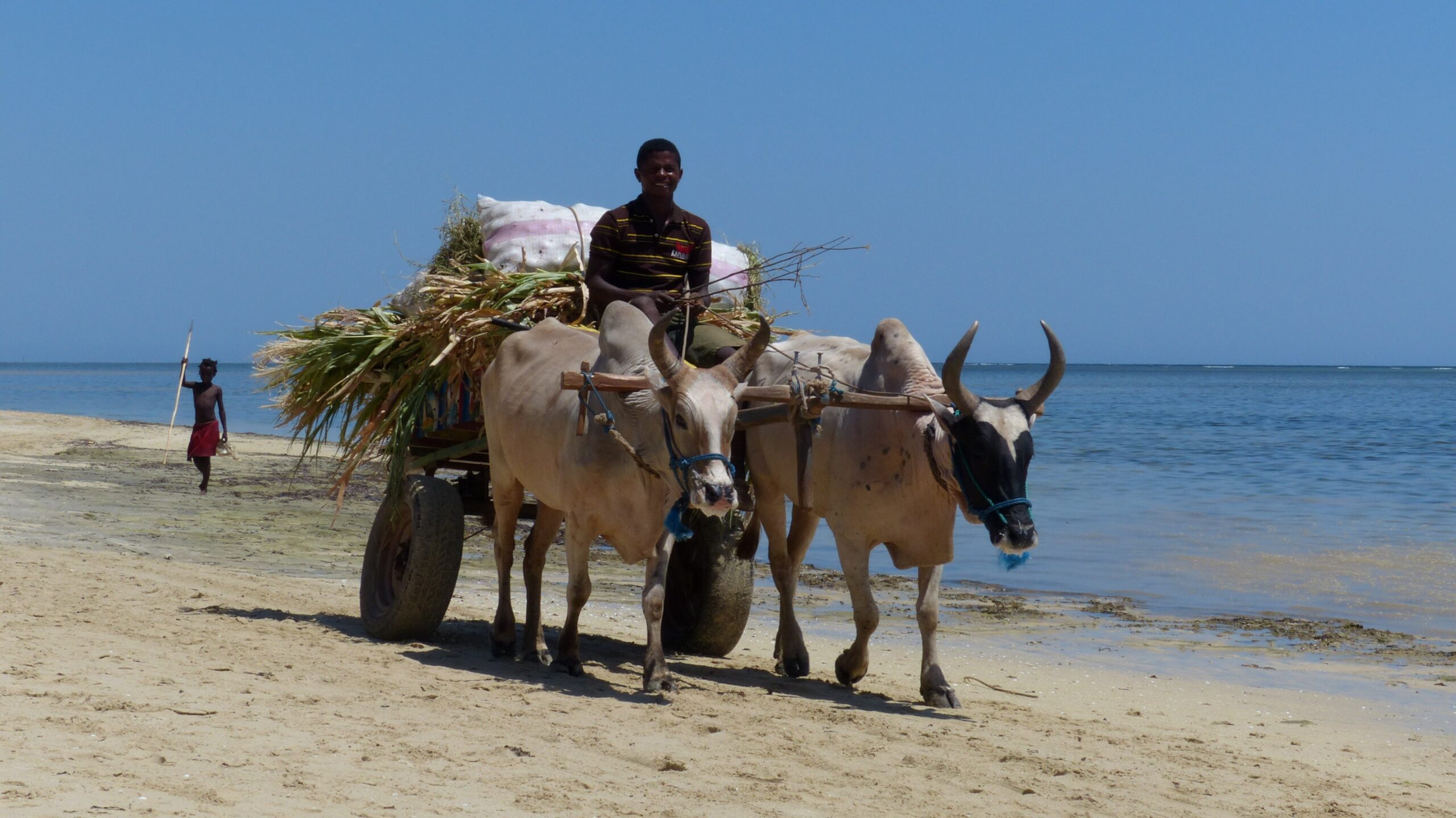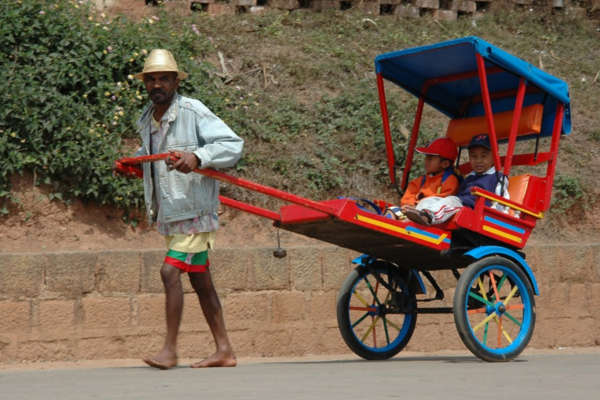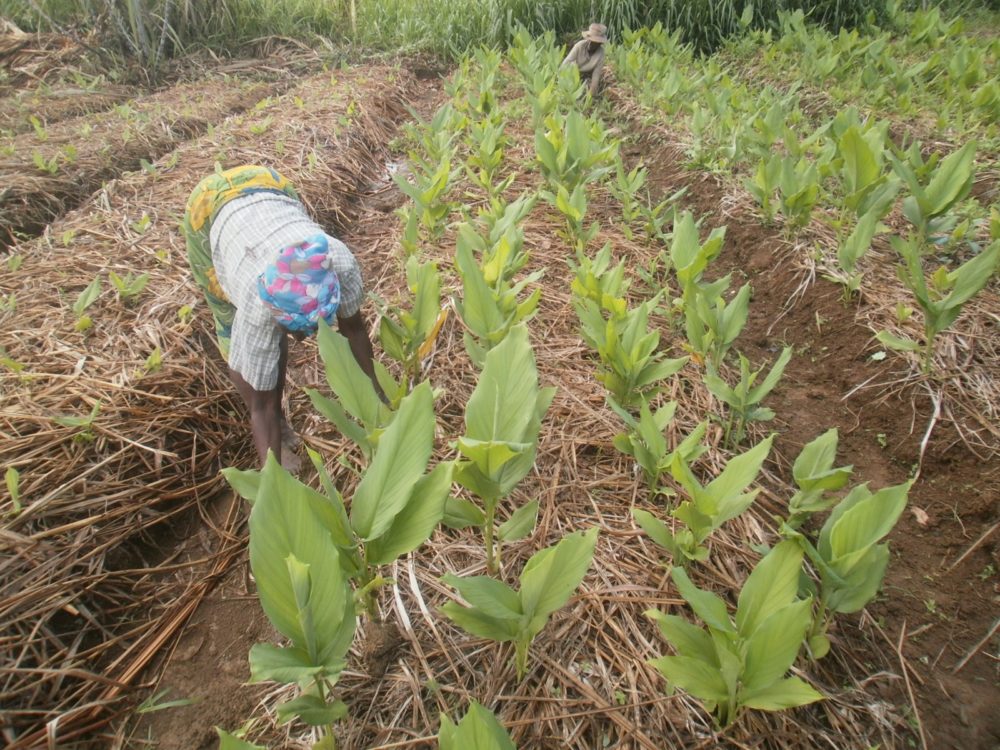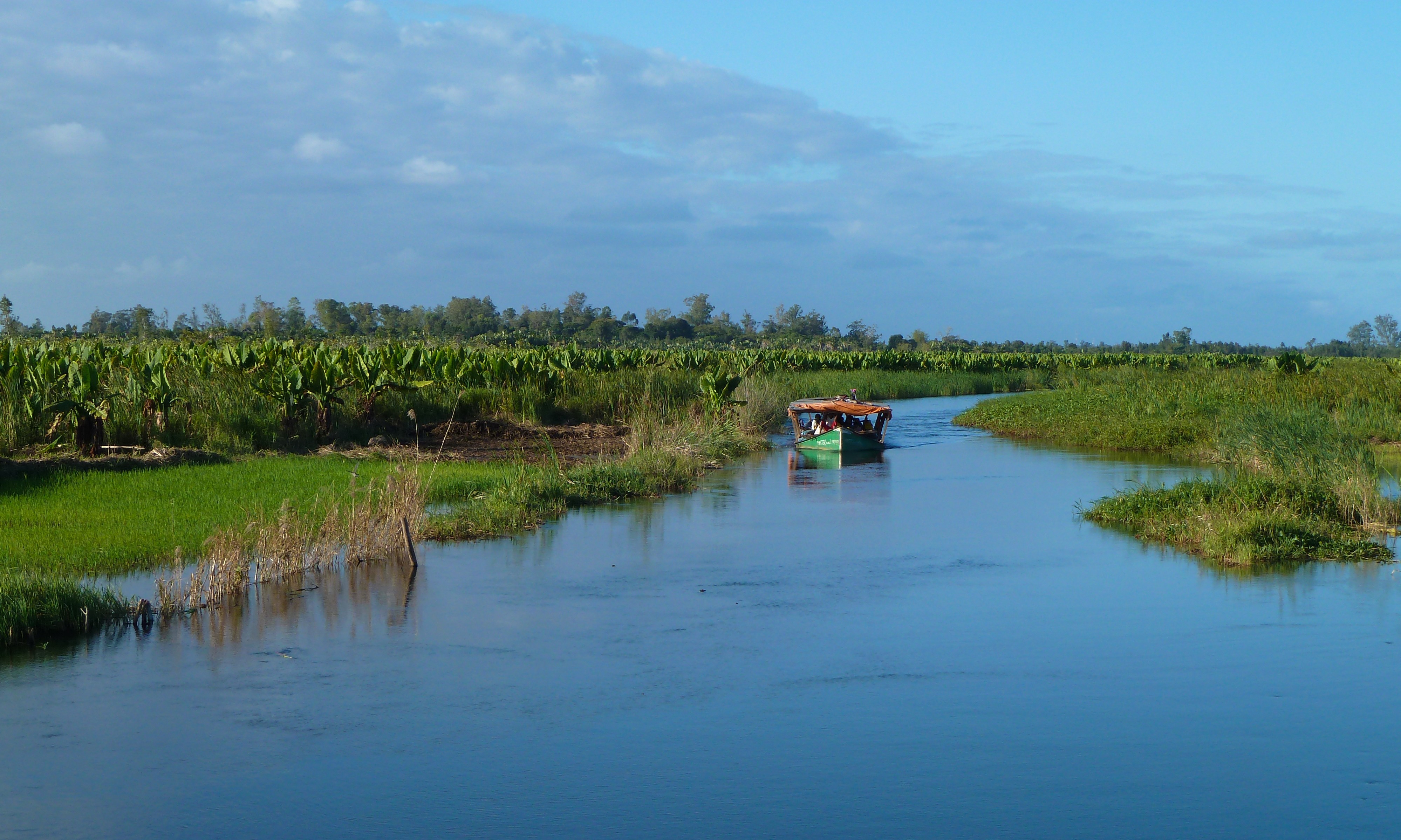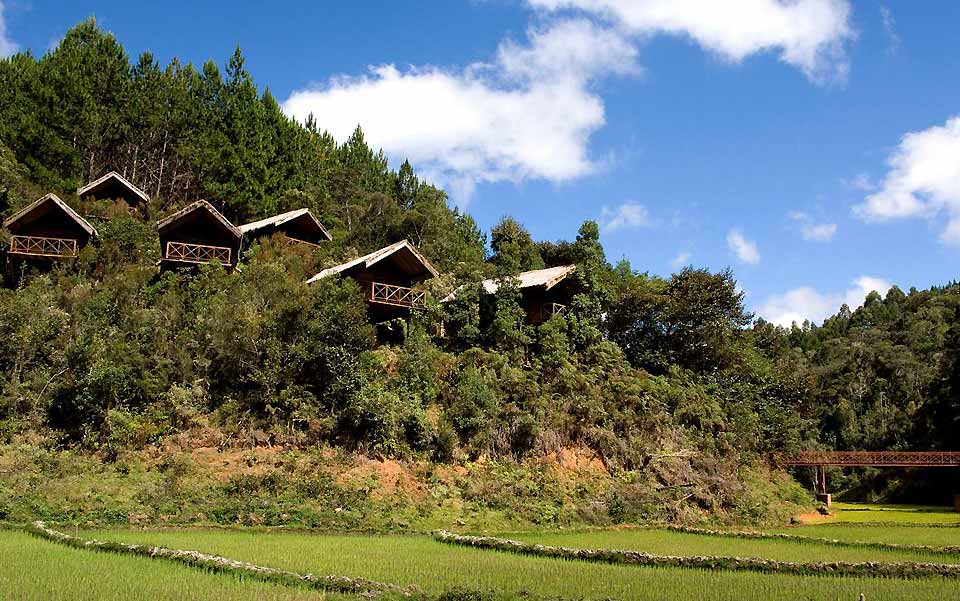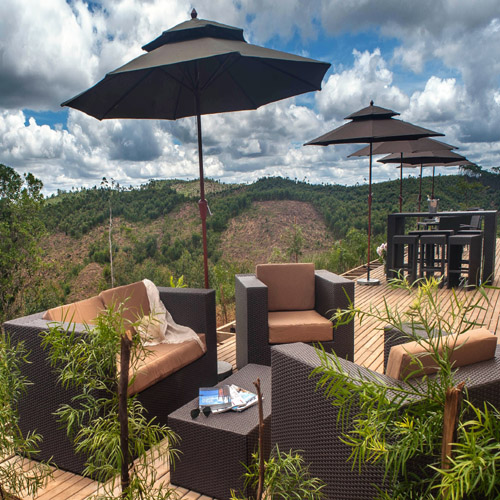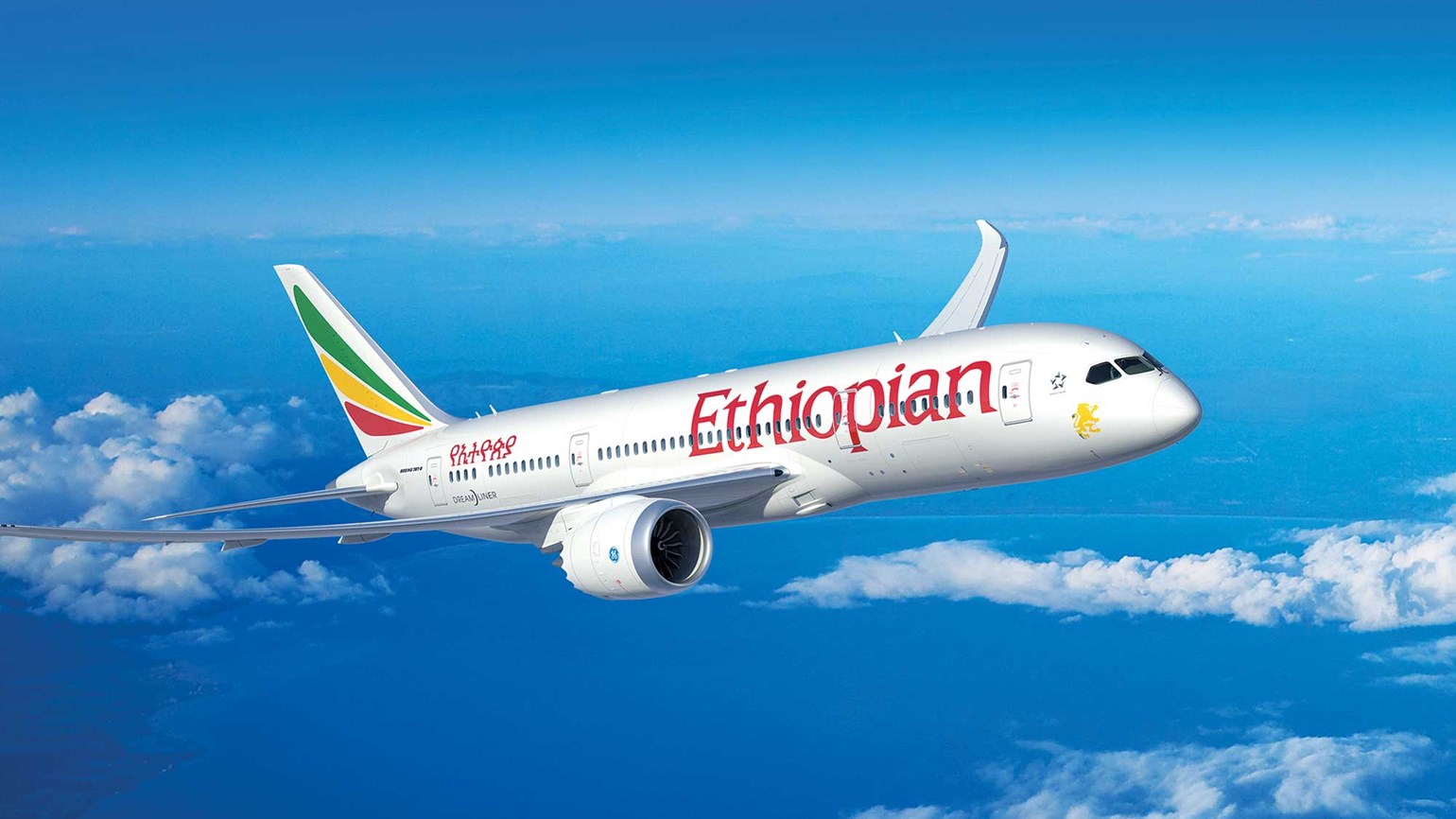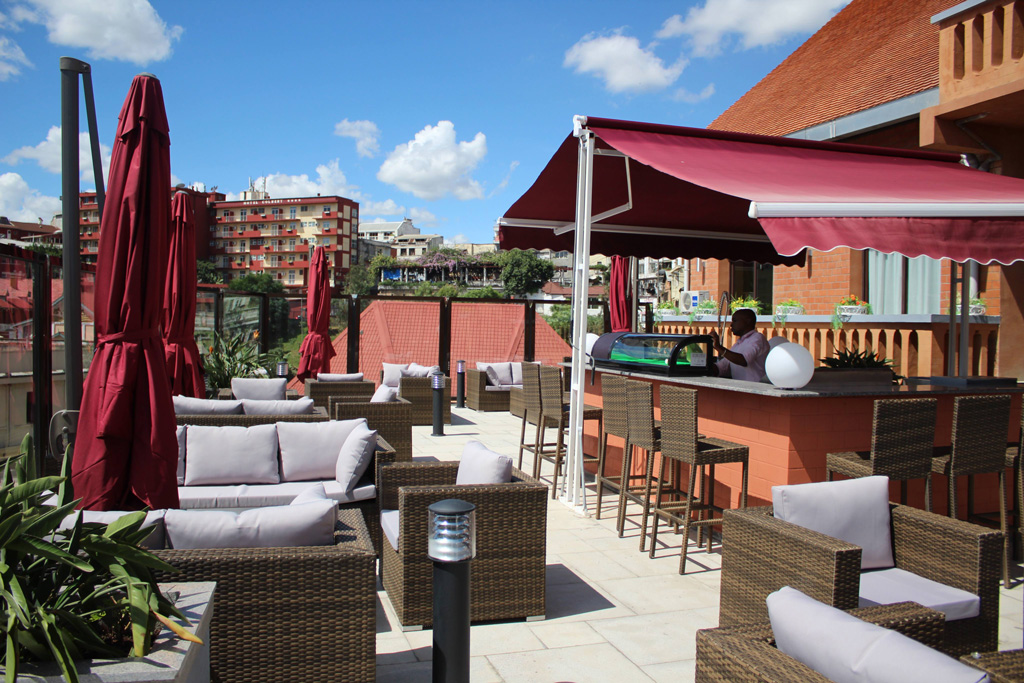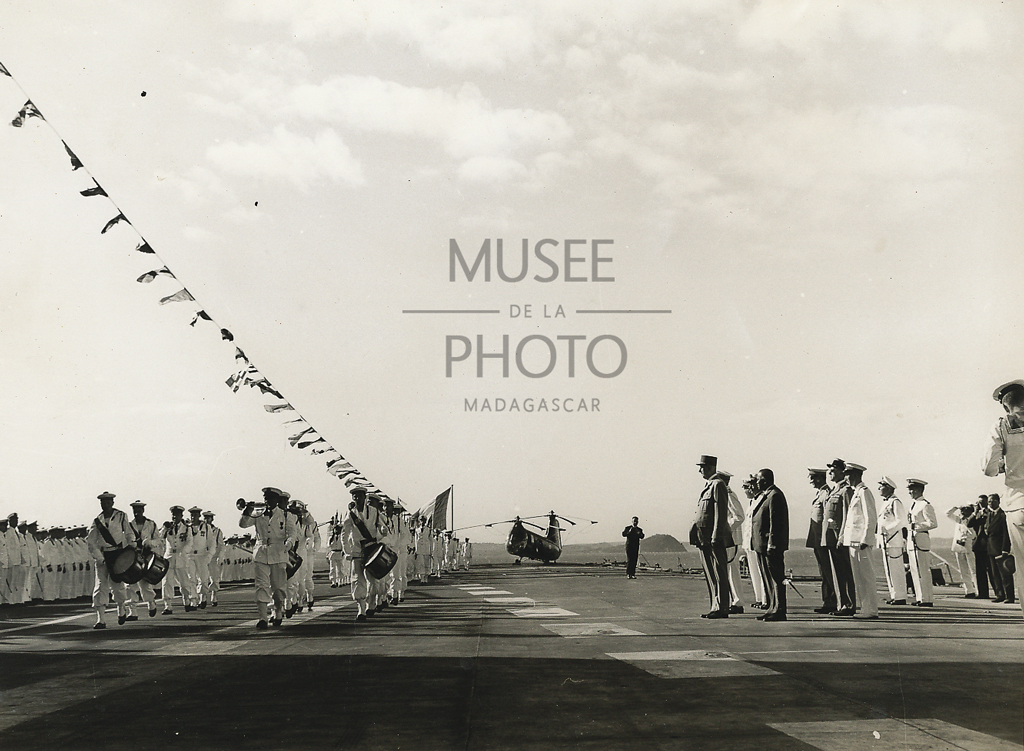One of the symbolic animals of Madagascar (in addition to the cute lemurs and unpredictable chameleons) is certainly the zebu, a bovine with the characteristic hump on its back and large horns. It is medium in size, with small head and ears, with short and smooth hair that can be of different colors: black, red, brown and gray. It is from the same family as European cattle, but is native to tropical Asia, and that is why it tolerates the high temperatures of the tropics much better.
They have been imported to Africa and perhaps crossed with other species for a certain period, but it seems that the Malagasy Zebus are particularly “pure”, more similar to their Asian ancestors.
It is mainly bred for the production of meat, but it also has other important uses.
In fact, zebus are widely used for preparing rice fields, for plowing fields and for pulling wagons and goods.
Without zebu there would be no rice fields, they are used to trample the fields before the rice transplant and thanks to their impressive labor force they prepare the land very effectively.
It is an ecological means of transport: hooked to a cart and in exchange for some grass, it takes the locals along the winding paths of the bush, without having to refuel and without polluting.
It is an animal widely used in Malagasy rites, especially as a sacrificial victim during family ceremonies, major events and demonstrations. Its flesh is also shared to seal the “Fihavanana”, a system of values that is the basis of Malagasy society.
The zebu is also present in death: on the day of the funeral the herd of zebu of the deceased is sacrificed and the skulls are then displayed on the tomb to show off his prestige and to accompany him into the afterlife.
The zebu is very important in Malagasy culture, where it symbolizes an outward manifestation of wealth. Owning a zebu, or – better still – a herd of zebu is a sign of success and the social status of the owner.
So the more zebu you have, the better it is!

